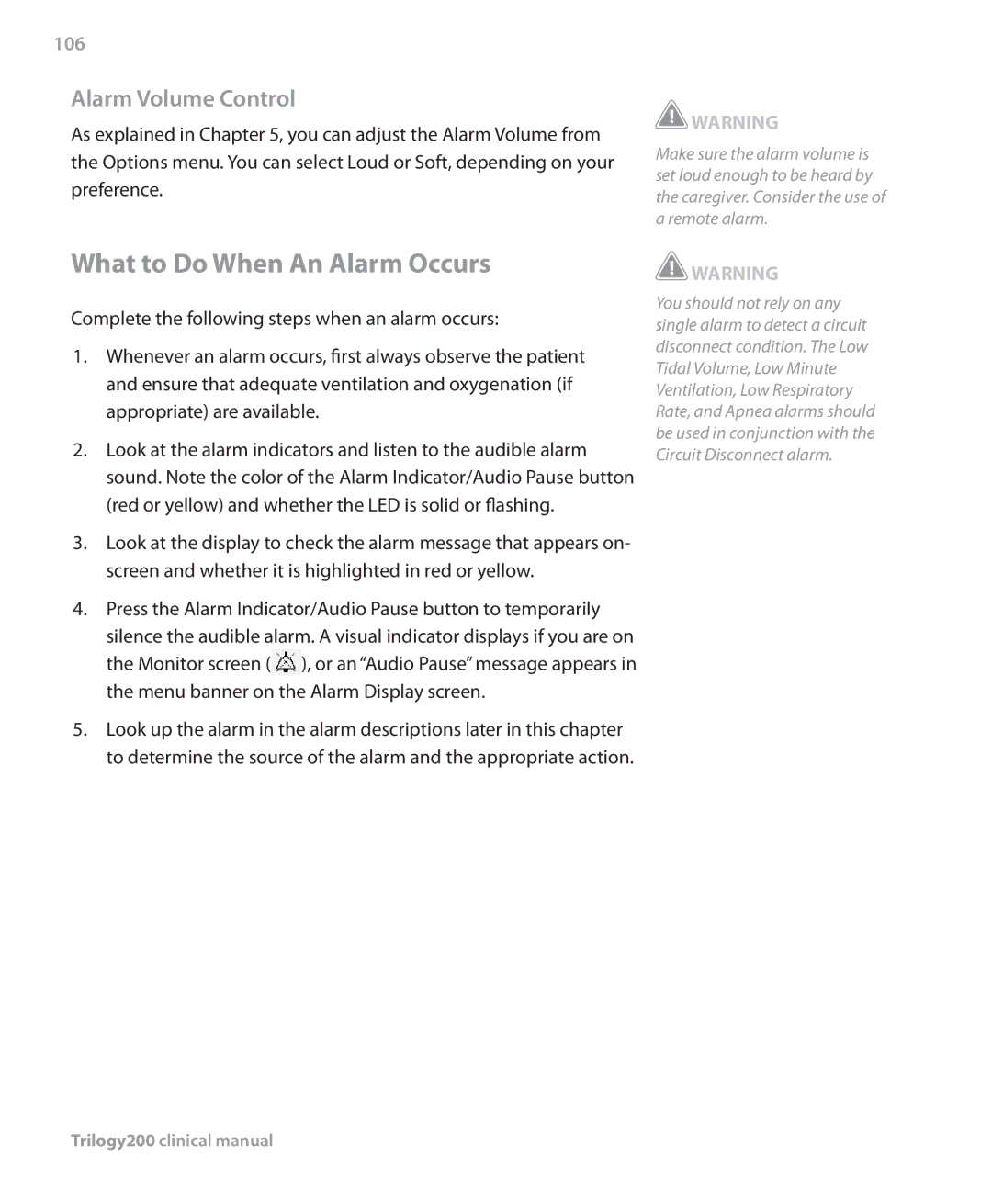106
Alarm Volume Control
As explained in Chapter 5, you can adjust the Alarm Volume from the Options menu. You can select Loud or Soft, depending on your preference.
![]() WARNING
WARNING
Make sure the alarm volume is set loud enough to be heard by the caregiver. Consider the use of a remote alarm.
What to Do When An Alarm Occurs
Complete the following steps when an alarm occurs:
1.Whenever an alarm occurs, first always observe the patient and ensure that adequate ventilation and oxygenation (if appropriate) are available.
2.Look at the alarm indicators and listen to the audible alarm sound. Note the color of the Alarm Indicator/Audio Pause button (red or yellow) and whether the LED is solid or flashing.
3.Look at the display to check the alarm message that appears on- screen and whether it is highlighted in red or yellow.
4.Press the Alarm Indicator/Audio Pause button to temporarily silence the audible alarm. A visual indicator displays if you are on
the Monitor screen (![]() ), or an “Audio Pause” message appears in the menu banner on the Alarm Display screen.
), or an “Audio Pause” message appears in the menu banner on the Alarm Display screen.
5.Look up the alarm in the alarm descriptions later in this chapter to determine the source of the alarm and the appropriate action.
![]() WARNING
WARNING
You should not rely on any single alarm to detect a circuit disconnect condition. The Low Tidal Volume, Low Minute Ventilation, Low Respiratory Rate, and Apnea alarms should be used in conjunction with the Circuit Disconnect alarm.
